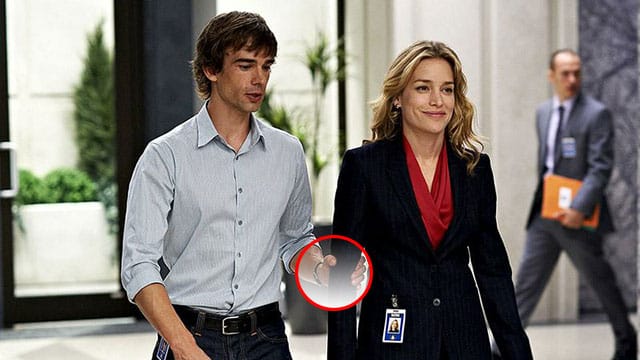Many people who are visually impaired feel comfortable traveling independently, but there may be times when a guide comes in handy.
In situations like crowded restaurants, parties, street crossings, or unfamiliar places, assistance may be needed.
The following steps will provide you with the skills and confidence to guide someone comfortably, respectfully, and safely.
1. Approach the person who is visually impaired, introduce yourself, and ask if they would like your help.
If assistance isn’t needed, respect the wishes of the person and move on.
Be aware that the person may not need or want help.
2.If your help is accepted, offer your arm to the person by lightly tapping the back of the persons hand with your own hand.
Never grab, push or pull a person who is visually impaired. This is considered rude and is less effective when trying to guide someone.
The person being guided will firmly grasp your arm above the elbow with the fingers on the inside and thumb on the outside of the arm, like they are holding a soda can.
The right elbow of the guide is held by the left hand of the person being guided and vice versa.
3. Walk at a natural, comfortable pace with your arm relaxed by your side.
When you start walking make sure the person you are guiding is about a half-step behind you and slightly to the side. This allows the person to anticipate changes like steps, ramps, doors, or narrow walkways.
The arm of the person being guided should be relaxed at about a 90 degree angle.
Make sure you aren’t standing too close as this can be uncomfortable and cause you to trip over each other. If you are too far apart too much space is left and the guide is ineffective.
4. Always be aware of your surroundings.
Look ahead for obstacles in your path and the path of the person you are guiding. Make sure to check at foot level, head level, and to the side.
5. Maintain communication with the person you are guiding to help him or her better understand their surroundings.
Be specific in your descriptions.
Instead of saying, “there is a seat next to you”, try saying, “there is an empty seat on your left”.
6. When approaching stairs, stop at the first step and stand alongside the person you are guiding.
Let them know where the handrail is located and allow them to change sides if necessary.
Announce to the person you are guiding if the stairs are going up or down. It is also helpful, but not always necessary, to inform the person how many steps there are. For example, “we are going to go up three steps”.
Start walking when the person is ready and remain about one step ahead of them. Let them know when you have reached the last step.
7. When walking through a doorway, make sure the person you are guiding is on the hinged side of the door.
Explain which direction the door opens and on which side. Allow the person to switch sides if necessary.
Open the door and walk through.
The person you are guiding will close the door using their free hand.
8. If you are guiding someone to a chair, place their hand on the back of the chair or the arm rest.
9. If you are approaching a narrow passage or doorway, move your guiding arm behind you towards the small of your back.
The person you are guiding will step in single file behind you to maneuver through the narrow space.
Return your arm to its normal position after the narrow space has been passed.
10. The standard form of sighted guide may need to be modified if the person has other disabilities or for someone who is very tall or short.
Small children may need to grasp at the wrist or hold hands.
If the person being guided needs more support, bend your elbow at about 90 degrees and allow them to hold the top of your forearm for maximum stability.
11. Never leave the person you are guiding in “free space.”
If you have to be separated, be sure the person you are guiding is in contact with a stable object like a wall or railing, until you return.
12. Practice makes perfect.
Grab a friend and a blindfold and practice these steps to gain confidence in your guiding technique.
For even more tips check out this video from Accessible Media, Inc.


Very interested in anything that will help me. I’ve had seven retina surgery leaving me with no sight in my left eye and very little in the right.I am loosing my sight and I’m trying to prepare for blindness.I live in my home I share with my son.I’m 71 years young,right now I’m thinking I’ll never leave this house when my full sight goes.I would feel I was a burden.I’ve always done everything for myself and love it,been a widow for six years after 48 years with my husband.so helpful to see these videos.
Your blind videos are very helpful.loosing my eye sight.